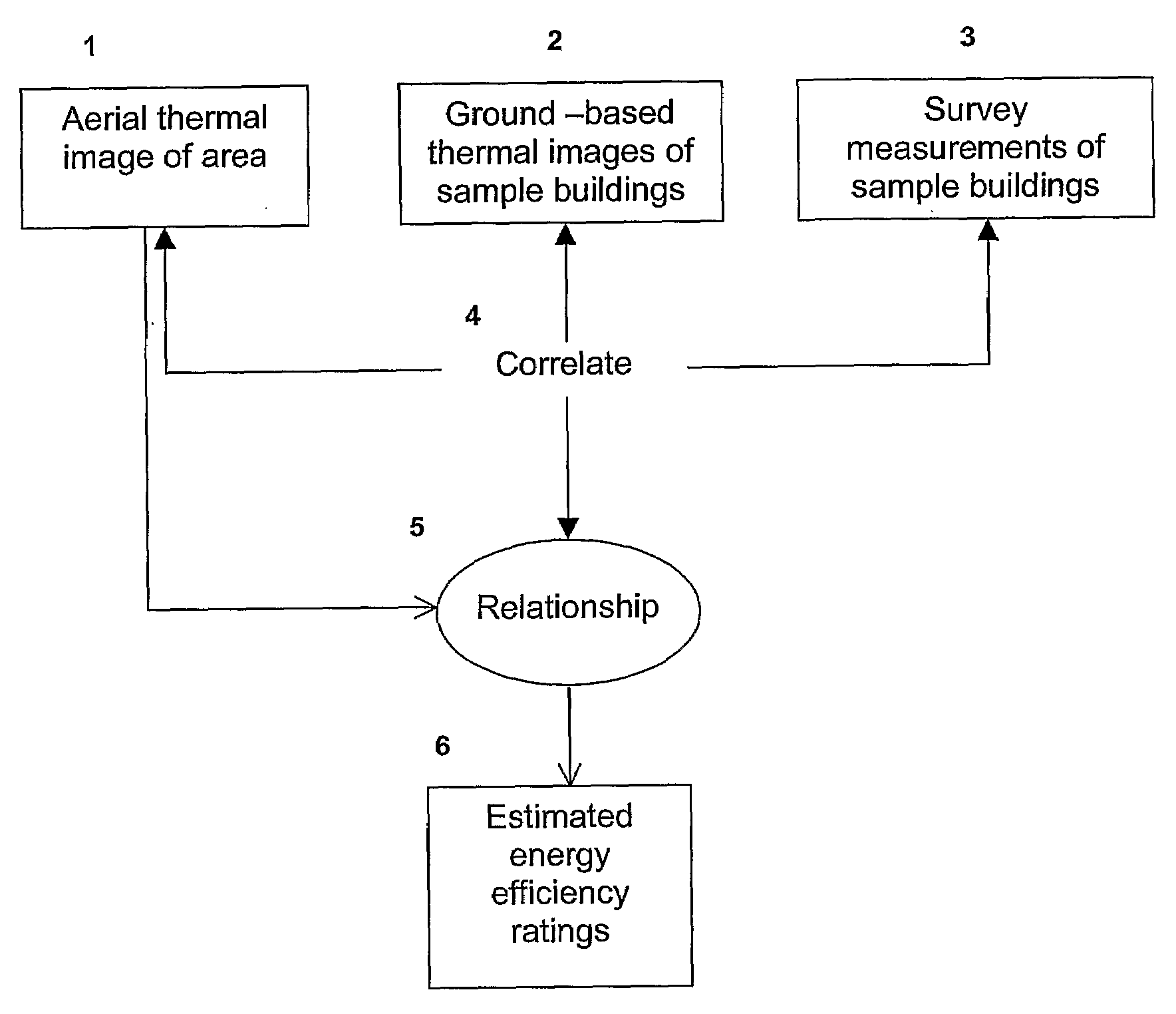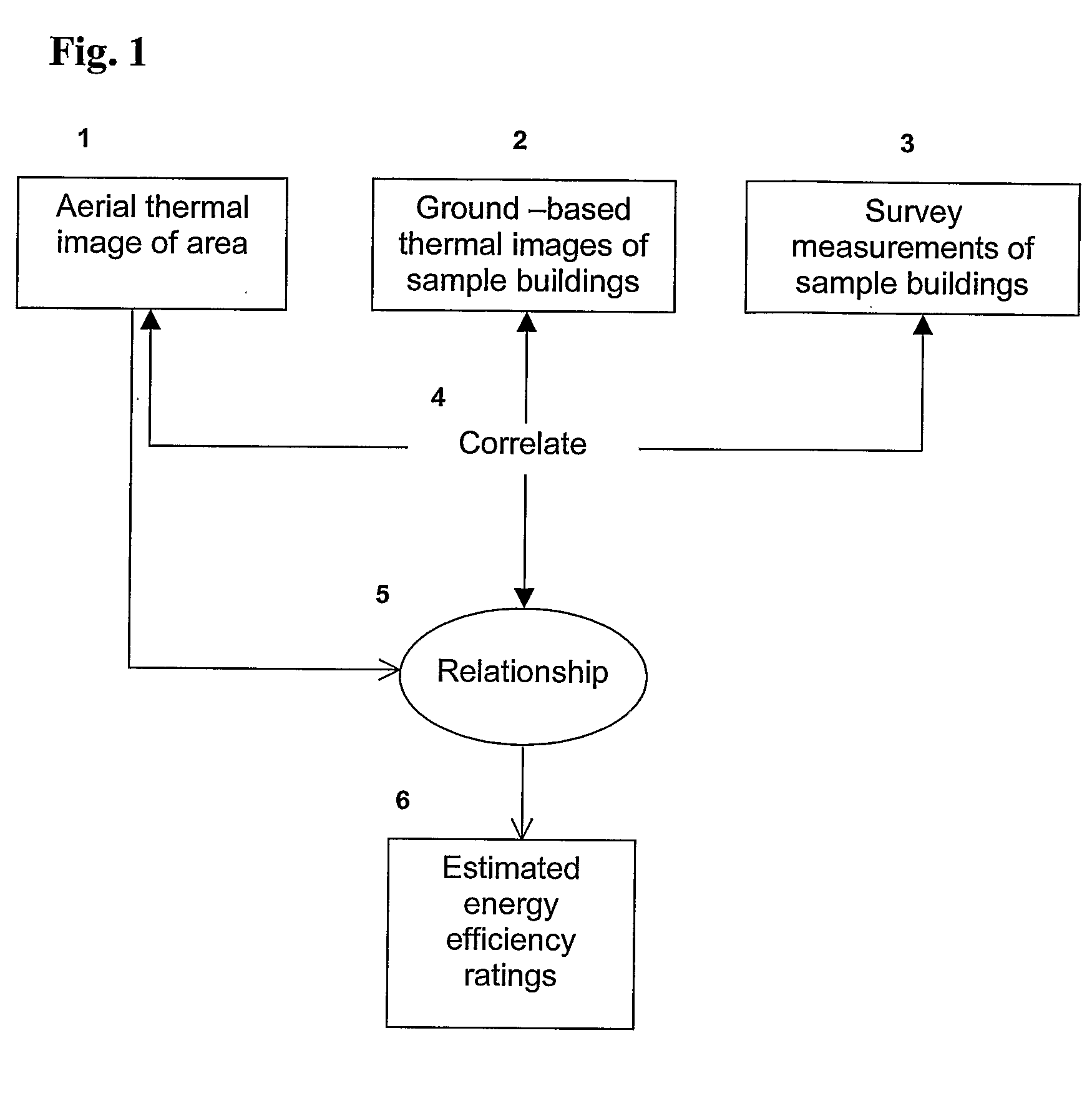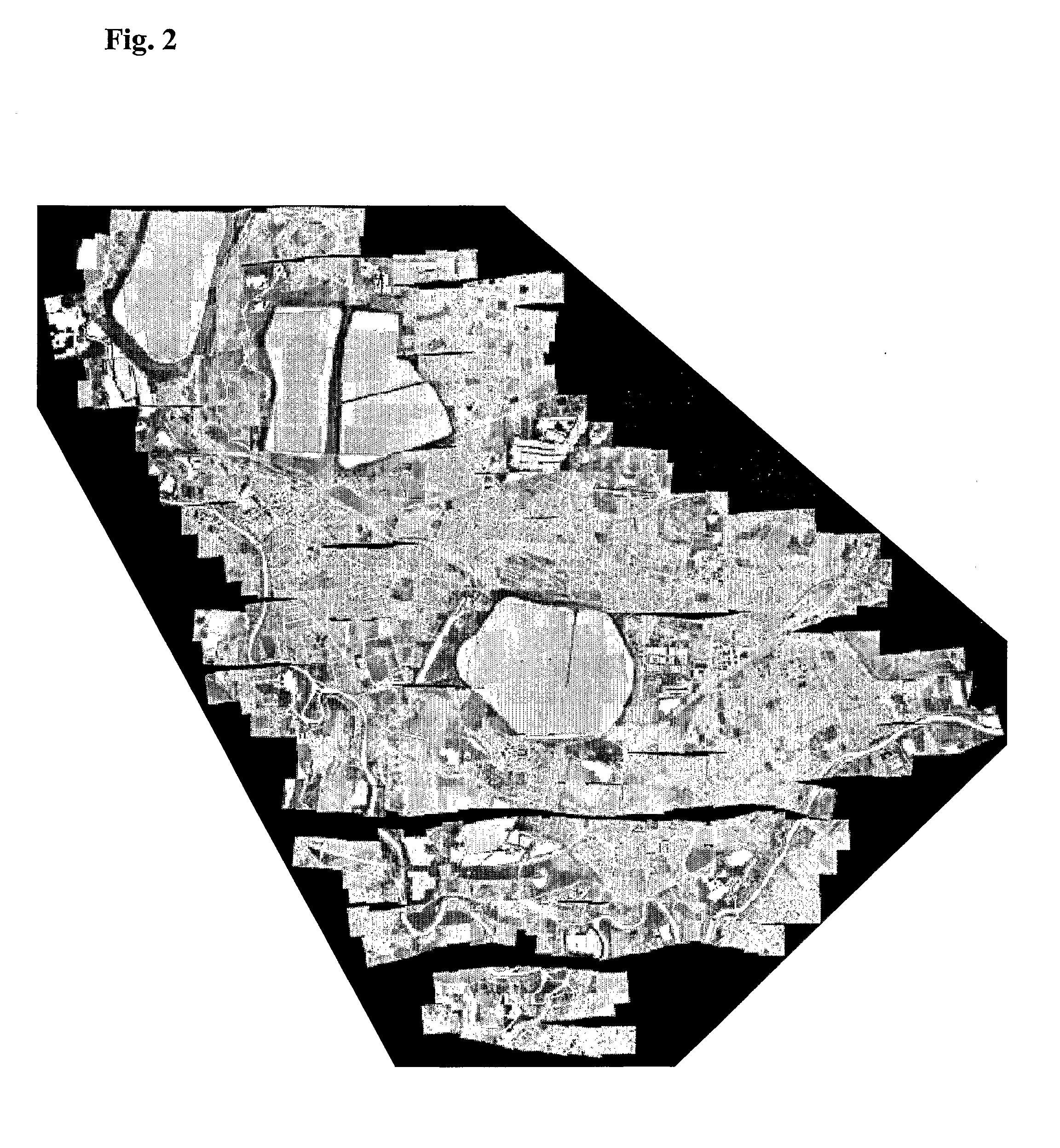Method of Assessing Energy Efficiency of Buildings
- Summary
- Abstract
- Description
- Claims
- Application Information
AI Technical Summary
Benefits of technology
Problems solved by technology
Method used
Image
Examples
Embodiment Construction
[0019]Aerial Thermal Image
[0020]A method according to an embodiment of the invention is illustrated in FIG. 1. According to this method, an aerial thermal image 1 is taken of an area containing buildings for which the thermal efficiency is to be estimated. The aerial thermal image 1 is taken under conditions selected so as to emphasize thermal effects caused by internal heating and heat loss from buildings, and to minimize the effect of solar heating. Preferably, the aerial thermal image is taken in cold weather conditions at a time when the interiors of the buildings are likely to have been heated to their normal temperature by internal heating systems, but the effect of solar heating is minimal; for example, 8 to 10 pm and / or the early hours in the morning.
[0021]The aerial thermal image 1 is preferably taken using a digital infrared camera mounted on an aircraft overflying the area at a substantially constant altitude. If the desired area cannot be imaged by one pass of the aircra...
PUM
 Login to View More
Login to View More Abstract
Description
Claims
Application Information
 Login to View More
Login to View More - R&D
- Intellectual Property
- Life Sciences
- Materials
- Tech Scout
- Unparalleled Data Quality
- Higher Quality Content
- 60% Fewer Hallucinations
Browse by: Latest US Patents, China's latest patents, Technical Efficacy Thesaurus, Application Domain, Technology Topic, Popular Technical Reports.
© 2025 PatSnap. All rights reserved.Legal|Privacy policy|Modern Slavery Act Transparency Statement|Sitemap|About US| Contact US: help@patsnap.com



